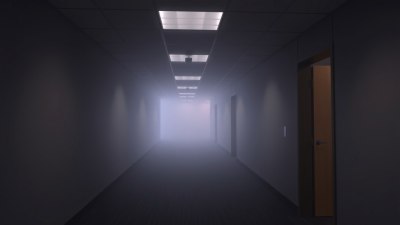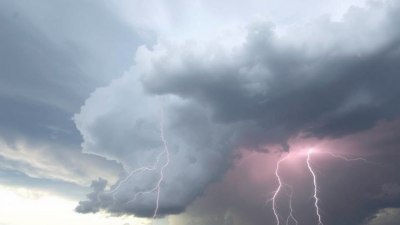The Scariest Weather Sound You May Never Hear Skyquakes Explained
Discover the eerie phenomenon of skyquakes and what causes these mysterious sounds in the atmosphere.

When one thinks of atmospheric phenomena, several elements come to mind: thunder, lightning, torrential rain, and blustery winds. However, there exists a phenomenon that remains largely obscure and is often described as a ‘skyquake.’ These unusual sounds can be both frightening and captivating, raising significant questions about their origin and implications. In this article, we will delve deep into the science behind skyquakes, their causes, and why they remain among the scariest sounds of nature.
Understanding Skyquakes
Skyquakes are spontaneous and unexplained sounds that originate from high in the atmosphere. They can often be mistaken for either a minor earthquake or thunder, but their characteristics set them apart. Skyquakes do not correspond to seismic activity on the ground, making them one of nature's most perplexing enigmas. They can be described as a series of loud booms or rumbling noises, sometimes coupled with a vibration that is felt rather than heard.
How Common Are Skyquakes?
While skyquakes are not commonly reported, they do occur in various locations around the world. Many people who have experienced them often regard them with disbelief or panic, thinking they have encountered something supernatural or extraterrestrial. Some notable recorded cases include events in places like the Gulf of California, the town of Grosse Pointe, Michigan, and over the skies of New Zealand. However, it is important to note that since skyquakes are often not understood or documented adequately, their frequency could be higher than suspected.
Possible Causes of Skyquakes
The exact cause of skyquakes is still under investigation, and while several theories exist, none have been conclusively proven. Here are some of the predominant theories regarding the origin of skyquakes:
1. Meteorological Phenomena
Meteorologists suggest that skyquakes may be linked to intense atmospheric phenomena. For instance, changes in temperature or pressure can cause air to behave in unusual ways, leading to explosive sounds as shockwaves travel through the atmosphere. Additionally, temperature inversions can trap sound waves close to the ground, allowing them to build in intensity before releasing abruptly.
2. Geological Activities
Some theories propose a connection between skyquakes and geological activities, such as underground tremors or volcanic activity. These geological events can create shockwaves that travel upward, resulting in sounds that can be heard high above the earth’s surface. However, distinct from regular earthquakes, skyquakes do not usually correlate with measurable seismic activities on the ground.
3. Human Activities
It is essential to consider the impact of human activities, including heavy machinery, construction work, or military exercises, which can also contribute to unexpected sounds. Jet aircraft flying at supersonic speeds can generate loud sonic booms that may be misidentified as skyquakes. Even artillery fire can produce similar auditory effects, leading to confusion among those who hear it.
Historical Accounts of Skyquakes
The documented history of skyquakes dates back several centuries, though many accounts were dismissed as folklore. Here are a few notable occurrences:
The New Madrid Seismic Zone
In the early 19th century, residents of the New Madrid Seismic Zone, located in present-day Missouri, reported hearing loud explosions in the sky during minor earthquakes. These reports, documented during the series of quakes from 1811 to 1812, have led many researchers to explore possible correlations between skyquakes and seismic events.
The Tunguska Event
Another famous event often linked to skyquakes is the Tunguska Event in 1908, where a massive explosion reportedly occurred over Siberia. Although no evidence of an impact crater was found, the resulting shockwave destroyed over 2,000 square kilometers of forest. Some theories propose that an airburst from a meteoroid or comet caused the explosion, followed by a sound that could have been classified as a skyquake.
Modern Observation and Research
Advancements in technology and research have led scientists to explore skyquakes more closely. The deployment of sensitive acoustic sensors and atmospheric models has provided insights about these enigmatic sounds. Yet, the elusive nature of skyquakes means that much remains unresolved. Continuous monitoring and research initiatives aim to catalog reported occurrences and analyze the contributing factors surrounding them.
The Implications of Skyquakes
Although skyquakes entertain some as mysterious phenomena, they hold significant importance for scientists and researchers. Understanding the mechanics of skyquakes can lead to advancements in our knowledge of atmospheric physics and environmental conditions. Additionally, studying these natural occurrences may help in predicting severe weather events or other geological activities that are often accompanied by strange atmospheric sounds.
Skyquakes in Popular Culture
The intrigue surrounding skyquakes has also captured the imagination of artists, filmmakers, and writers. Many fictional works and documentaries have explored the phenomenon, often linking it to extraterrestrial activity or supernatural occurrences. This depiction stirs fear and curiosity alike, contributing to the myths and legends that surround unexplained sounds in nature.
Future Research Directions
As our understanding of the atmospheric and geological dynamics improves, it is likely that we will gain more significant insights into skyquakes. Upcoming research initiatives may include refining detection technologies, enhancing acoustic monitoring, and collaborating with meteorological and geological institutions to develop comprehensive studies. These advancements hold the key to deciphering the mystery of skyquakes and illuminating one of nature's darkest sounds.
In conclusion, skyquakes remain one of nature's most captivating yet terrifying phenomena. Their unexplained origins and eerie sounds have sparked an interest that transcends scientific inquiry. While they may not be sounds everyone has the opportunity to hear, their existence contributes to our understanding of the complex and dynamic system that governs our planet's atmosphere. As research continues and technology evolves, we may one day unveil the secrets behind these frightening meteorological whispers.











